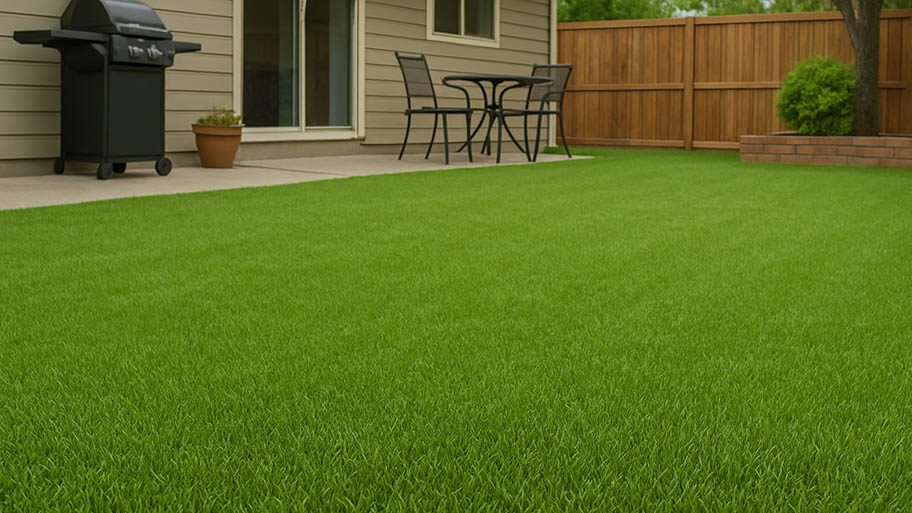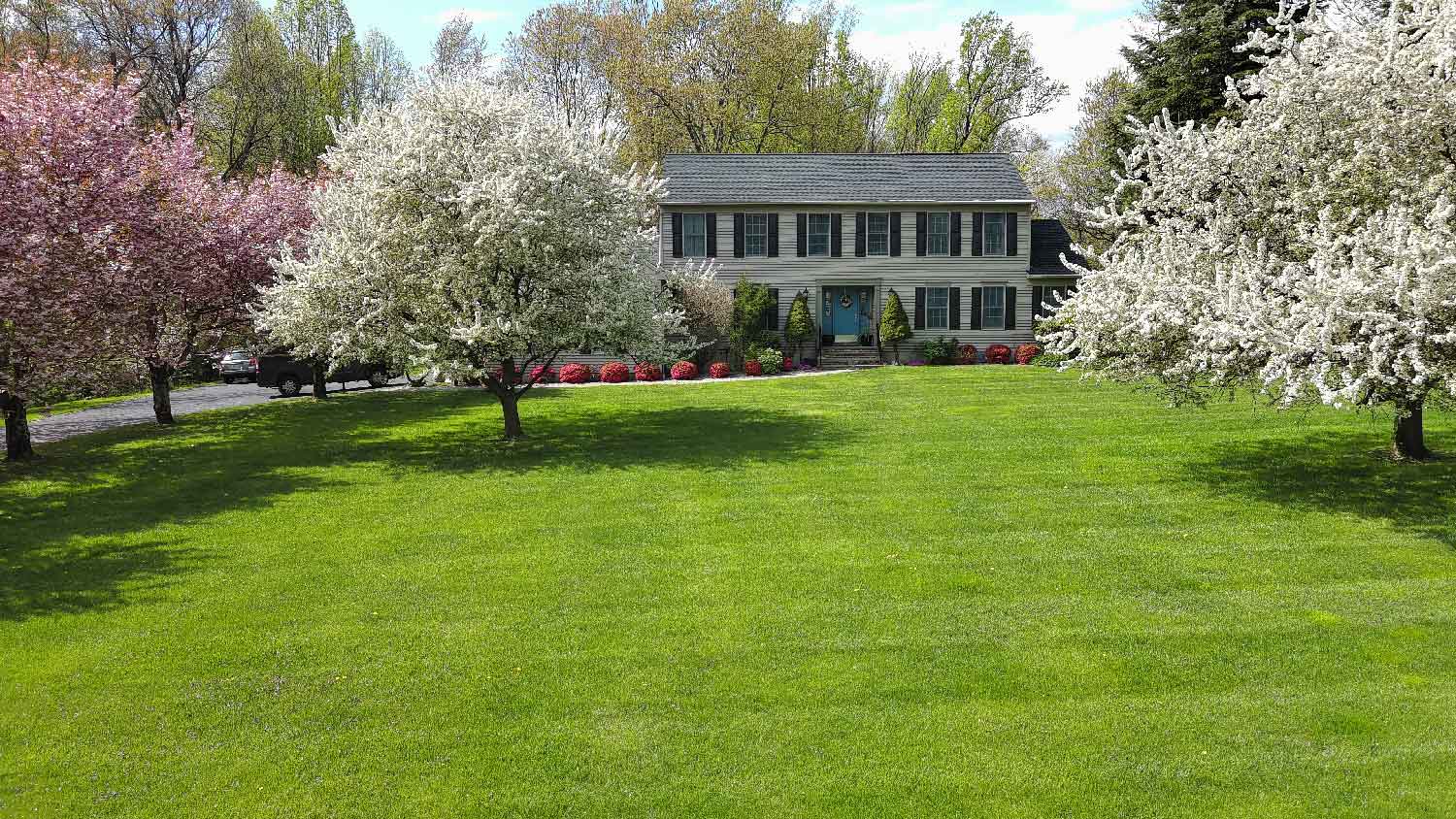
Your total lawn care cost depends on several factors, including the type of service and lawn size. Our guide will cover what you can expect to pay for lawn care.
Two turf titans go toe-to-toe


An aerator pokes thousands of holes into your soil to break it up.
Aeration allows water, sunlight, and fertilizer to seep into the roots, strengthening grass and other plants.
Tillers are like a reset button for your lawn, enabling you to turn over the top layer of your soil for planting.
The best times to aerate are spring and early fall.
The best time to till is when you’re ready to start fresh with a new lawn or breaking up hard soil or rock.
Keeping your lawn and plants happy means ensuring your soil is good. Aerating and tilling are two solid ways to help your soil stay healthy so that your grass can grow big and strong (but not too big, of course). Check out the differences between a tiller versus aerator, explore the pros and cons of each approach, and find out when you should use them in your lawn care maintenance routine.
When comparing tilling versus aerating, you’ll need to understand how each one works and how they impact your lawn’s soil. Below is a look at the pros and cons of aeration and tilling and situations in which they each work best.

A tiller is a device used to break up the outer layer of soil, preparing it for planting. The best time to till will be toward the end of summer when the soil will be at its warmest. When considering whether or not to till your lawn, here are the pros and cons:
| Pros | Cons |
|---|---|
| It breaks up large sections of soil | Frequent tilling can disrupt the structure of your soil, promoting runoff |
| Works great if you’re reseeding your entire lawn | Frequent tilling reduces crop residue, which can cause clogs in the soil, not allowing water to seep through |
| You can rent lawn tillers instead of buying them at home improvement stores | It is time-consuming work |
Best for:
People who plan to start over and reseed their whole lawn or dead areas
People who want to irrigate their soil and need to break up compact soil and rocks
People who need to replace their current soil with compost or a robust topsoil
Tillers do offer some advantages in that they break up large sections of soil easily. This is beneficial if you’re looking to install a sprinkler system, you want to plant new grass seed, or you need to remove larger rocks. It’s also relatively cost-effective in that you can rent a lawn tiller from your local hardware store instead of paying hundreds of dollars to buy one.
There are not many instances in which a tiller is going to help your yard in general lawn maintenance. First off, tilling is laborious. On top of that, tilling disrupts your soil’s structure. Not only can this lead to weed growth, but it also reduces crop residue if you till too much. And without crop residue, your soil is more susceptible to clogs from particles, making it difficult for your new plants to receive the water and nutrients they need.

What is lawn aeration? It’s where you use a device to poke tiny holes all throughout your yard. This process breaks up compacted soil, allowing sunlight, fertilizer, air, and water to seep into the roots of the grass, nourishing and strengthening them. When considering whether or not to aerate your lawn, here are some pros and cons:
| Pros | Cons |
|---|---|
| Alleviates soil compaction | Can be hard work, especially if you have a large lawn |
| Increases moisture absorption | Leaves unsightly soil residue |
| Makes grass/plants stronger and less susceptible to pests and disease | Can cause grass damage if you don’t aerate at the right time |
Best for:
People preparing their soil for the summer or winter months
People who notice runoff on their lawns
People whose lawns have a lot of heavy foot traffic
People who notice patches of discolored grass
One benefit of aerating your lawn is that aeration loosens thatch and breaks up soil compaction. Thatch is a layer of organic material between the grass and soil that can choke grass roots, stopping them from receiving the water and nutrients they need. Aeration also prevents water buildup, which can run off, taking new roots or recently applied fertilizer with it.
The biggest drawback to using an aerator is that it's hard work, particularly if you have a large yard. On top of that, knowing when to aerate your lawn is of utmost importance and can be difficult to figure out if you don’t know your soil and grass type. Aerating during the middle of the dormant season can damage grass seeds, not nourish them.

Now that you have a better idea of the functions and when to use each, here’s a breakdown of which one wins based on key considerations:
Lawn aeration costs differ depending on if you DIY or hire a company to do the work for you. On the DIYing end, you could pay less than $100 for a four-hour rental. Meanwhile, your local lawn aeration specialists will likely charge between $75 and $210, meaning that if you don’t want to do the work, you’ll not be out much more to pay a company to do it.
Meanwhile, lawn tillers will usually cost you less than $50 to rent at your local hardware store for a four-hour rental. Meanwhile, if you pay someone to till your yard, it’ll run you around $60 per hour.
With electric tillers, you can finish a yard of less than 1,000 square feet in just under two hours. By comparison, using a rolling aerator will take around one hour, while electric models get the work done in 15 to 30 minutes.
A tiller isn’t a tool you’re going to use often unless you run a commercial real estate business. In fact, the only time you’re going to till is when you’re reseeding a lawn or breaking up really hard soil or rocks for planting.
Meanwhile, aerating is something you should do once or twice per year. This means that, from an ownership standpoint, it’s much more practical to own an aerator as opposed to a tiller. You’re going to get more use out of it, you’ll have a greener lawn, and it’ll enhance the curb appeal of your home.
From average costs to expert advice, get all the answers you need to get your job done.

Your total lawn care cost depends on several factors, including the type of service and lawn size. Our guide will cover what you can expect to pay for lawn care.

The cost to renovate your lawn depends on the extent of the damage. Our guide will show you how much lawn renovation costs.

Artificial grass is a low-maintenance alternative to traditional turf. Learn how much artificial grass installation costs and what affects your price.

Curious how to kill weeds in your grass and keep them from popping up every season? Here are five weed-fighting methods to beautify your lawn.

A lush moss lawn can be a beautiful, low-maintenance green space that thrives in extreme conditions with little effort.

Have you been wondering, “Why is my yard lumpy?” Learn about the likely causes of a bumpy yard and what you can do to flatten it out for good.